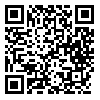Volume 15, Issue 1 (5-2024)
JAP 2024, 15(1): 23-34 |
Back to browse issues page
Download citation:
BibTeX | RIS | EndNote | Medlars | ProCite | Reference Manager | RefWorks
Send citation to:



BibTeX | RIS | EndNote | Medlars | ProCite | Reference Manager | RefWorks
Send citation to:
Sufizadeh A A, Anbarian M. The effectiveness of single session of kinesio taping and resting on pain, disability and range of motion of the neck of smartphone users. JAP 2024; 15 (1) :23-34
URL: http://jap.iums.ac.ir/article-1-5706-en.html
URL: http://jap.iums.ac.ir/article-1-5706-en.html
1- Master of Art in Sport biomechanics, Faculty of Sports Sciences, Bu-Ali Sina University, Hamedan, Iran
2- Professor of Sport biomechanics, Faculty of Sports Sciences, Bu-Ali Sina University, Hamedan, Iran ,anbarian@basu.ac.ir
2- Professor of Sport biomechanics, Faculty of Sports Sciences, Bu-Ali Sina University, Hamedan, Iran ,
Abstract: (1226 Views)
Aims and Background: The purpose of the study was to compare the effectiveness of single session resting and kinesio taping on pain level, disability and range of motion among individuals who complained of pain and discomfort in the neck after using a smartphone.
Methods: Twenty-four individuals with average age of 25.71 years, who complained of pain and discomfort in the neck after using a smartphone, participated in this quasi-experimental study. During two consecutive days, they received conservative interventions including resting and kinesio taping exercise. The duration of each intervention was one session. The level of pain, disability and the cervical spine's range of motion were measured with the visual analog scale (VAS), the neck disability index questionnaire and cervical spine's range of motion using the standard goniometer before starting the treatment (immediately after 15 minutes of using the smartphone), and after performing resting and taping interventions. The data were analyzed by ANOVA with repeated measures (p<0.05).
Results: Both resting and taping methods were significantly decreased the mean score of pain and disability of the neck, but the effect of taping was more. The results also showed that both intervention methods led to a significant increase in cervical spine's range of motion, but the effectiveness of taping was higher than resting.
Conclusion: The results of this study showed that kinesio tape technique in comparing with resting can more effectively decreased the amount of pain and disability in the neck as well as incising cervical spine's range of motion in smartphone users.
Methods: Twenty-four individuals with average age of 25.71 years, who complained of pain and discomfort in the neck after using a smartphone, participated in this quasi-experimental study. During two consecutive days, they received conservative interventions including resting and kinesio taping exercise. The duration of each intervention was one session. The level of pain, disability and the cervical spine's range of motion were measured with the visual analog scale (VAS), the neck disability index questionnaire and cervical spine's range of motion using the standard goniometer before starting the treatment (immediately after 15 minutes of using the smartphone), and after performing resting and taping interventions. The data were analyzed by ANOVA with repeated measures (p<0.05).
Results: Both resting and taping methods were significantly decreased the mean score of pain and disability of the neck, but the effect of taping was more. The results also showed that both intervention methods led to a significant increase in cervical spine's range of motion, but the effectiveness of taping was higher than resting.
Conclusion: The results of this study showed that kinesio tape technique in comparing with resting can more effectively decreased the amount of pain and disability in the neck as well as incising cervical spine's range of motion in smartphone users.
Type of Study: Original |
Subject:
General
Received: 2023.02.22 | Accepted: 2024.03.2 | Published: 2024.05.30
Received: 2023.02.22 | Accepted: 2024.03.2 | Published: 2024.05.30
Send email to the article author
| Rights and permissions | |
 |
This work is licensed under a Creative Commons Attribution-NonCommercial 4.0 International License. |






